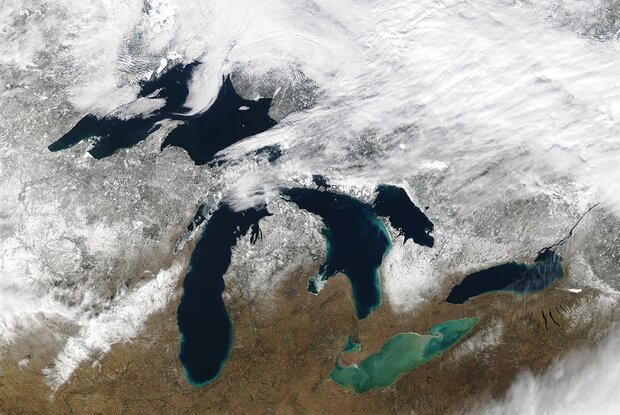Low ice on the Great Lakes this winter

This MODIS satellite image from February 12, 2023 shows below-average ice cover for this time of year on the Great Lakes. Credit: NOAA GLERL / NOAA Great Lakes CoastWatch Node

This MODIS satellite image from February 12, 2023 shows below-average ice cover for this time of year on the Great Lakes. Credit: NOAA GLERL / NOAA Great Lakes CoastWatch Node
Ice coverage has reached a record low in the Great Lakes for this time of year.
As of February 13, 2023, only 7 percent of these five freshwater lakes was covered in ice, which is significantly below the 35-40 percent ice cover that is expected for this time of year, according to NOAA’s Great Lakes Environmental Research Laboratory (GLERL).
Ice extent across the basin briefly jumped up to 21 percent in early February in response to a cold snap, but has been declining since. Maximum ice cover typically occurs between mid-February and early March.
NOAA has been keeping records on the Great Lakes ice extent since 1973.
Air temperatures are the main factor affecting ice cover on the Great Lakes, and a warmer than average January contributed to the lack of ice. According to the U.S. National Ice Center, each of the five lakes experienced warmer than average air temperatures in January. In addition, it was an especially warm January across the contiguous U.S.: The average temperature was 35.2 degrees F (5.1 degrees above average) according to NOAA, and January 2023 Earth’s seventh-warmest January on record.
Read more at the link below.